Tag: abs
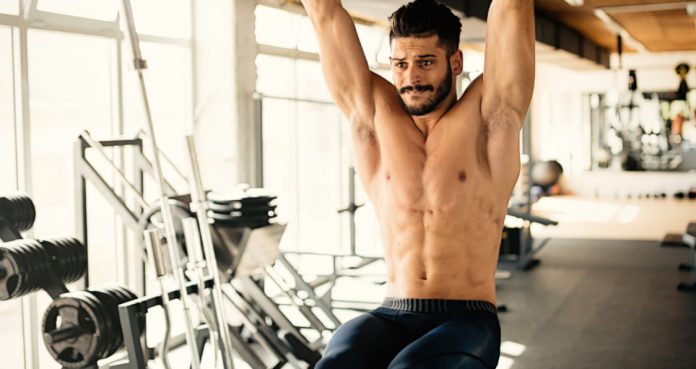
How To Perform Perfect Hanging Leg Raises
Hanging Leg Raise Analysis
The hanging leg raise is an isolation exercise which develops the abdominal muscles and hip flexors – specifically, the rectus abdominis, obliques, iliopsoas and rectus femoris (1). Isolation exercises are movements that involve motion around only one joint; with the hanging leg raise, the driving movement should occur around the hip joint to maximize the amount of stress placed on the aforementioned muscles and cause adaptation.
By regularly performing the hanging leg raise, it is possible to improve the strength of the core musculature. For many, “the core” simply refers to the abdominals. In actuality, the core consists of all muscles found in the trunk of the body. In simpler terms, all the muscles of the body, excluding muscles of arms and legs, form the core (2).
The core’s function is to provide stability to the entire body through the use of muscular contractions. It is well documented that improving one’s core strength can bring about a whole host of positive changes and improvements such as, prevention of injury, improved posture, enhanced balance and facilitate efficient movement (3).
In order to effectively improve the strength of the core, it is imperative to partake in regular strength training. Exercises that target specific muscle groups of the core can certainly be of benefit. However, recognizing that the core’s function is to stabilize, exercises which place the body in an unstable environment will force the core to react and consequently adapt more effectively.
While the hanging leg raise is primarily an effective core developing exercise, an aspect which is often overlooked is the fact that a large degree of upper body strength is also required in order to hold the body in the correct position. The deltoids, trapezius and rhomboids, along with a multitude of smaller stabilizing muscles, must all contract to hold the body upright. Therefore, the hanging leg raise can also be considered effective for building upper body strength.
Safety Precautions
The first precaution that should be made, is to ensure that the equipment being used is well maintained and in good working order. This is especially true for those who have their own equipment at home.
It is always wise to consult a medical professional before beginning any physical exercise. This is of even greater importance for those who are recovering from injury or surgery, those with a pre existing medical condition and those who are pregnant or have experienced diastasis recti.
Hanging Leg Raise Coaching Points
For the hanging leg raise, a gym workstation or captains chair should be used in order to fix the body in position. Both pieces of equipment allow the user to place their arms on the frame and support their own bodyweight while in a suspended position. Although these types of equipment come in a variety of shapes and sizes, the vast majority of gyms will have some type of workstation or chair which will allow for hanging leg raises.
In order to effectively perform the hanging leg raise, run through the following coaching points.
1) Position yourself within the frame and rest your forearms on the arms of the chair. If the chair has handles, grab on to both and hold tight.
2) Squeeze the muscles of the core, take a big breath and step off, holding your body in midair.
3) From this suspended position, focus on bringing the knees upwards. Avoid driving the knees any higher than waist height.
4) As you lower the legs back to the starting point, continue to brace the core muscles while exhaling.
5) If possible, perform 8 – 10 reps and repeat for 3 sets. Ensure you take 1-2 minutes rest between each set.
Common Execution Mistakes
There are a number of errors that should be avoided when performing this exercise. By failing to perform exercises with correct technique, not only are we failing to work the muscles effectively, but we are also increasing the chances of experiencing or developing injury.
Arching The Back
When setting up for the exercise, it is imperative that the back is pressed firmly into the support (providing the equipment has appropriate supports). This will prevent arching, specifically of the lower spine, which can cause problems and increase one’s risk of injury. Finally, ensure to keep the neck and head steady throughout the exercise as head and neck movement may exaggerate spinal flexion.
Failing to Engage the Core
No matter which exercise is being performed, whether it be a heavy squat or a simple bicep curl, engaging the core is essential. With each rep of the hanging leg raise, look to squeeze the muscles of the core and keep as tight as possible. This will help to place maximal demand on the abs and hip flexors while keeping each movement controlled and safe, thus reducing injury risk.
Using Momentum
This error ties in nicely with the above point; by bracing the core, it is possible to eliminate the use of momentum. Uncontrolled swinging of the legs may indeed make the exercise easier, however, momentum is at play and reducing the demand placed on the muscles. Look to keep every movement controlled – especially on the way down where it can be tempting to simply drop the legs instead of lowering them in a controlled fashion.
Breath Holding
Failing to breathe with each repetition is not recommended. Breath holding combined with the stress and strains associated with the exercise can rapidly increase one’s blood pressure. This increase in pressure is known as the Valsalva maneuver and, while it has been found to increase intra-abdominal pressure and may therefore assist in maintaining stability, can cause dizziness, heart rate alterations and, in extreme cases, fainting (4).
It can be easy to forget to breathe when squeezing the core. Aligning breathing with each leg lift can be a useful tactic. Breathe in on the way up, breathe out on the way down and repeat.
Hanging Leg Raise Regressions and Progressions
Don’t worry if completing 8-10 reps of this exercise is a struggle. If this is the case, look to perform as many reps as possible and as the weeks progress and quickly the 8-10 rep range will become much more achievable.
If, however, it is a struggle to get into the correct position on the frame or if the movement itself is too challenging, there is an alternative exercise that can be performed instead. The lying leg raise replicates the movements involved in the hanging variation, however, it removes the suspension element and instead lies the individual flat on their back which greatly simplifies the exercise.
There are a number of variations that we can use in order to increase the difficulty and challenge of the hanging leg raise. It would be wise to move onto these progressions when it is possible to comfortably complete 8-10 reps of conventional hanging leg raises.
Straight Leg Raises
The first progression involves a simple change in form to increase the intensity of the movement. Instead of focusing on hinging the knees and bringing them upward, simply look to maintain straight legs throughout as the legs lift and lower.
Pull-Up Leg Raise
A second method for progressing the hanging leg raise, is to use a pull up bar instead of a chair or workstation. By doing this, there are no supports to hold the body in place and therefore, it truly becomes a “hanging” exercise.
The challenge with the pull-up bar variation is that the body is likely to start swinging as movement is generated around the hips and knees. Therefore, a greater demand is placed on the core and stabilizing musculature of the body to prevent excessive swinging and hold the body in position.
Captain’s Chair Kicks
For this exercise variation, lock the body into the captain’s chair and brace the core. From that position, raise only one leg up to waist height and perform a flutter kick. Then, alternate leg and replicate the same movement once again. For an added challenge, lift both legs up and flutter kick simultaneously. This will maintain tension on the abs and hip flexors for a prolonged duration thus causing great strength adaptations.
Captain’s Chair Twists
The final variation will focus more on the obliques which are the muscles found on the side of the body and assist in twisting and rotation. For the chair twists, as the legs begin to rise up, add some rotation by bringing the legs out to the side of the body. After a number of reps, the obliques will definitely be burning!
Final Word
There is no doubt that, when performed correctly, the hanging leg raise is one of the most effective exercises for developing the core and has been found to specifically place a large demand on the abdominals (5). Therefore, if the goal is either to improve core strength or to develop the abs, this exercise should absolutely be incorporated into training sessions.
For more news and updates, follow Generation Iron on Facebook, Twitter, and Instagram.
References:
1- Kim, Kanghoon; Lee, Taesik (2016-2). “Comparison of muscular activities in the abdomen and lower limbs while performing sit-up and leg-raise”. Journal of Physical Therapy Science. 28 (2): 491–494. doi:10.1589/jpts.28.491. ISSN 0915-5287. PMC 4792997. PMID 27065536.
2- Huxel Bliven, Kellie C.; Anderson, Barton E. (2013-11). “Core Stability Training for Injury Prevention”. Sports Health. 5 (6): 514–522. doi:10.1177/1941738113481200. ISSN 1941-7381. PMC 3806175. PMID 24427426.
3- Publishing, Harvard Health. “Core conditioning — It’s not just about abs”. Harvard Health
4- Hackett, Daniel A.; Chow, Chin-Moi (2013-8). “The Valsalva maneuver: its effect on intra-abdominal pressure and safety issues during resistance exercise”. Journal of Strength and Conditioning Research. 27 (8): 2338–2345. doi:10.1519/JSC.0b013e31827de07d. ISSN 1533-4287. PMID 23222073
5- McGill, Stuart; Andersen, Jordan; Cannon, Jordan (2015). “Muscle activity and spine load during anterior chain whole body linkage exercises: the body saw, hanging leg raise and walkout from a push-up”. Journal of Sports Sciences. 33 (4): 419–426. doi:10.1080/02640414.2014.946437. ISSN 1466-447X. PMID 25111163.
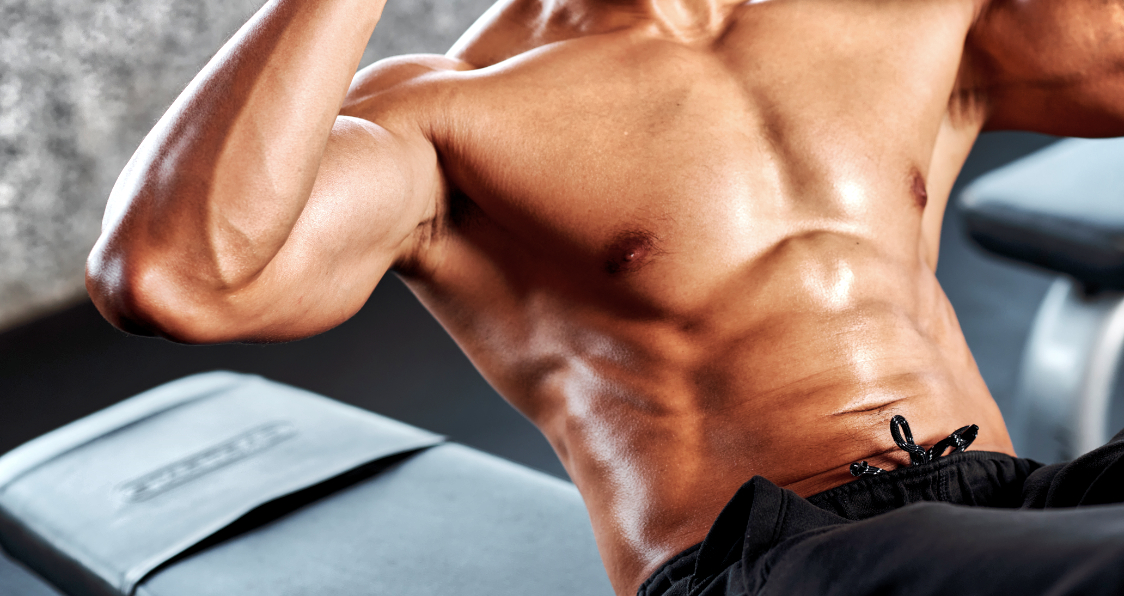
How To Get A Six-Pack (Post Pandemic Edition)
A complete guide to sculpting the perfect six-pack abs
Crafting a six-pack is hard. Anyone who tells you otherwise is lying. We wish getting a six-pack was as easy as grabbing a six-pack of beer from a store. Also, we think the alcoholic beverage companies are playing a practical joke on us. Or do they want it to act like a reminder that a six-pack of beer will never let you have six-pack abs? You be the judge.
The pandemic has been rough, especially for fitness enthusiasts. The mayhem that the coronavirus caused put us in an unexpected situation. Who would have thought we would be locked in our houses for months on end. The lockdown situation didn’t bode well for our bodies either.
While we did see the WFH culture take on a new life last year, it didn’t translate the same way for the fitness scene. The reason behind it is not so hard to figure. People have a motivation to work – money, but the same doesn’t always apply to fitness.
Ways To Build A Six-Pack After The Pandemic
Now that most of us have started training at gyms again, it’s time to create a blueprint for achieving our dream physiques. Washboard abs are a result of optimal training, nutrition, and recovery programs. Falling off in any of these can throw you off track.
Read also: 5 Gym Habits You Should Follow Post COVID
If Cap’n Crunch is the first thing that comes to your mind when someone mentions crunches, you know you have some work to do. In this article, we will help you build a six-pack from scratch. Even if you’re a fitness newbie or an advanced lifter, you’ll take something away today.
1. Diet
Remember: Abs are made in the kitchen and crafted in the gym. You shouldn’t expect to build a chiseled midsection while feasting on burgers every other day. Your first step towards a six-pack should be to get your diet in order.
Your diet plan will vary depending on your current body fat percentage and the excess weight you need to shed. Everyone has abs, but most of us love them so much that we have them protected under a layer of fat.
Switch to a calorie deficit diet – meaning you need to be burning more calories than you’re consuming. Since you were in your house for a big chunk of the year, you could be running a calorie surplus.
How to Design Your Diet Plan:
Use A Calorie Tracking App – Apps like MyFitnessPal and HealthifyMe are great for logging your daily food intake. You should log your meals for at least a week before checking your average daily calorie and macronutrient intake and breakdown.
Find Out How Many Calories You Need – There are many online calculators which will tell how many calories you need to be eating based on your age, height, weight, and gender. Use this calculator to find your daily calorie intake goal and this for the macronutrient goals.
Choose Your Food – Wisely – Some people make designing a diet plan sound harder than it is. After you know how many calories you need to be eating every day, you should begin putting down food items that meet your goals in a planner. The apps mentioned above have an extensive list of food items with different nutrient values. Selecting foods that fit your lifestyle is very crucial. You don’t want to add food items to your list that are too exotic or expensive.
Follow The Diet Plan – Might sound basic, but following the program can be the roughest part of dieting.
2. Training
Most people are never able to build a six-pack because they stick to vanilla ab workouts. If a few crunches and sit-ups are your idea of an ab workout, you shouldn’t even bother starting.
Break down your midriff training into sections. Your workouts should consist of different exercises to train your upper, middle, and lower abs. Oblique training is another overlooked aspect of core training. Follow the workouts mentioned below to take your abdominal to the next level.
Workout 1
Hanging Leg Raises – 3 Sets 20-30 Reps
Cable Crunches – 3 Sets 20-30 Reps
Planks – 3 Sets 1 Minute-Each
Mountain Climbers – 3 Sets 20-30 Reps
Jumping Jacks – 3 Sets 1-Minute Each
Workout 2
Flutter Kicks – 3 Sets 30-40 Reps
Alternating Leg Lowers – 3 Sets 30-40 Reps
Side Planks – 3 Sets 1-Minute Each
Glute Bridge March – 3 Sets 30-40 Reps
High Knee Running – 3 Sets 1-Minute Each
Workout 3
Lying Windshield Wipers – 3 Sets 20-30 Reps
Crunches – 3 Sets 30-40 Reps
Superman Planks – 3 Sets 90-Seconds Each
V-Ups – 3 Sets 30-40 Reps
Burpees – 3 Sets 2-Minutes Each
Workout 4
Russian Twists – 3 Sets 30-40 Reps
Ab Wheel Rollouts – 3 Sets 10-20 Reps
Push-Up Planks – 3 Sets 90-Seconds Each
TRX Mountain Climbers – 3 Sets 30-40 Reps
Squat Jumps – 3 Sets 2-Minutes Each
Workout 5
Stability Ball Knee Tucks – 3 Sets 30-40 Reps
Barbell Oblique Twists – 3 Sets 30-40 Reps Each Side
Planks Pulses – 3 Sets 1-Minute Each
Jackknives – 3 Sets 30-40 Reps
Jump Rope – 3 Sets 2-Minutes Each
Training Frequency
Many fitness newbies make the mistake of training their abs every day. You don’t need to spend hours working on it. An intense 30-minute session is enough to get the job done.
Cardio (HIIT)
Cardio sessions are a must if you want a midsection that the Greek Gods approve. You should program a HIIT cardio session at the end of every resistance workout. Also, if you want a six-pack, forget rest days. Active rest days are the closest you get to no physical activity.
3. Recovery
Since your midsection is a small muscle group, it needs time to recover from brutal workouts. As a rule of thumb, don’t train your abs if they are sore. And, if you are training your abs more than thrice a week – you are doing too much.
Some ways of improving your recovery after workouts:
Drink at least a gallon of water every day.
Never miss a post-workout meal.
Use a post-workout supplement if you need it.
Wear compression clothing.
Warm-up before weight training.
Cool-down post workouts.
Make foam rolling and stretching a part of your training routine.
Take a cold shower.
Conclusion
If you had a ripped midsection before the onset of the pandemic, you have a headstart. Your muscle memory is going to help you get back in shape in no time. On the other hand, newbies should stick to the workout, diet, and recovery programs for a minimum of six months before expecting any results.
How often do you train your abs? Let us know in the comments below. Also, be sure to follow Generation Iron on Facebook and Twitter.
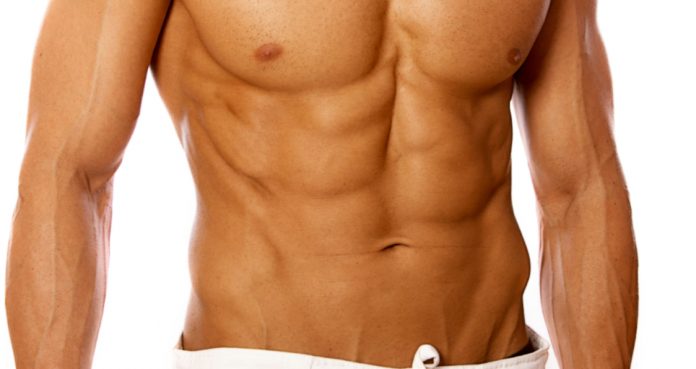
A Killer Circuit Workout To Smoke Your Abs
Build Your Dream Abs With This Circuit Workout
Abs are one of the most desired muscles and yet only a few possess them. A set of aesthetically appealing washboard abs are the result of proper training, diet, and recovery. You can’t build the abs of your dreams if one of the components is out of proportion.
Performing a circuit training workout can be more effective in developing the shape and conditioning of your abs as compared to the vanilla training routine of 3 sets of 10-12 reps. Try this ab workout the next time you train your abs and let us know how it goes.
You’ll be performing a total of three circuits where each circuit will have five exercises. After each exercise, you’ll rest for 30-seconds before performing the next exercise. After completing a circuit, you’ll rest for a minute before starting the second round.
Reverse Crunches – 20 Reps
In this circuit workout, you’ll be training your midriff from all the angles to ensure overall development. The reverse crunches work the middle and lower abs and are one of the most underutilized exercises when it to abdominal development.
Lie down with your back on a floor mat and your arms placed at your sides. Keep your feet flat on the floor by bending at your knees. Bring your quads to your chest by lifting your hips off the floor while maintaining the bend in your knees. Slowly return to the starting position and repeat for the recommended reps.
Russian Twists – 20 Reps (Each Side)
Obliques are one of the most overlooked muscles when it comes to abdominal training. The obliques are the fish gill-like muscles at the side of your abs. Twisting and turning movements are the ones which target the obliques most effectively.
If you feel the bodyweight version of the exercise is too easy for you, feel free to add resistance by holding a weight plate in front of your chest with your arms extended over your knees.
Cable Crunches – 20 Reps
While you don’t need to use added resistance in every ab exercise, using weights can help bring out the definition and separation in your midriff. Make sure you’re following a full range of motion while performing all the exercises mentioned in the article.
If you want to do this ab workout at home, you can perform the orthodox crunches instead of the cable version. Controlled breathing plays an important role in abdominal training. You should be breathing out and squeezing your abs at the contraction point and breathing in while returning to the starting position.
Leg Raises To Heels To Heaven – 20 Reps
Leg raises to heels to heaven bring the goodness of two exercises into one. Lie down on an exercise mat with your arms extended at your sides. Perform a leg raise by elevating your legs off the floor while keeping your legs straight.
As you form a 90-degree angle with your legs and the floor, raises your legs towards the roof by lifting your hips off the floor. Return to the starting position in the same manner with a slow and controlled movement.
Planks – 1 Minute
Most people make the mistake of overlooking their core strength when it comes to ab training. Core strengthening exercises will not only help you in shaping your abs but will also improve your performance in functional exercises.
Perform the orthodox planks in the first set and switch to doing the side planks in the next two circuits. If you give your all in this circuit workout, your abs will be on fire by the end of the first circuit and asking for mercy by the last.
Header image courtesy of Envato Elements
How often do you train your abs? Let us know in the comments below. Also, be sure to follow Generation Iron on Facebook, Twitter, and Instagram.
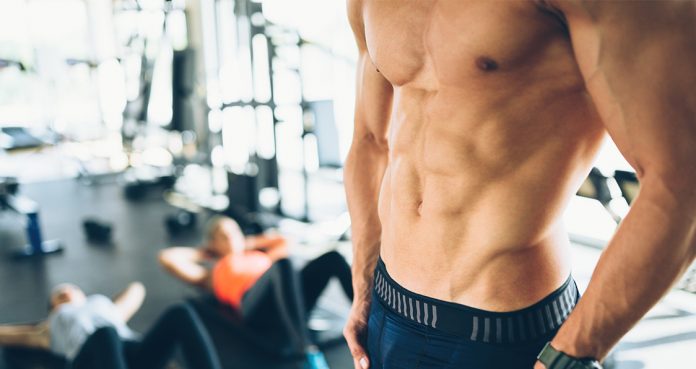
Build a Rock Solid Core With These Exercises
Perform These Exercises To Build A Rock-Solid Core
A rock-solid core isn’t only aesthetically appealing, it can add to your functional strength which helps in everyday activities. Building a shredded midriff is easier said than done. Washboard abs are the result of months of hard work in the gym and kitchen.
The massive fan following you’ll amass when you lift your shirt is just one of the perks of having a ripped abdomen. Just like us humans, no two ab exercises are the same. A few exercises are more effective in developing a solid core as compared to the others.
Planks
Planks are one of the most effective ab exercises. They were brought into the mainstream with the rising CrossFit popularity. While performing the plank, make sure your body is in a straight line and your hips don’t sack or form a bridge.
Windshield Wipers
Windshield wipers are a brutal exercise. If you’re a beginner, you might not be able to perform the windshield wipers. You can do the hanging leg raises until you develop the appropriate core strength.
Ab Wheel Rollouts
The Ab wheel rollouts work the entire abdomen and will leave you with a crazy ab pump by the end of the exercise. If you don’t have access to an ab wheel at your gym, you can use a barbell by putting a quarter plate at each end of the bar.
Toes To Bar
Performing the toes to bar requires strong core stabilizers. Most people make the mistake of using momentum by swinging back and forth while performing the exercise. As the name implies, your toes should touch the bar at the top of the movement.
Decline Bench Reverse Crunches
Reverse crunches are the opposite of the orthodox crunches. While the normal crunches work the upper abs, the reverse crunches work the lower abdomen. Performing the reverse crunches on a decline bench adds resistance to the exercise.
Cable Crunches
The cable crunches are an incredibly effective upper ab exercise. The upper and middle abs are stronger as compared to the lower abs and using added resistance can help better target the muscle group.
Landmine Twist
The obliques are one of the most overlooked muscles when it comes to ab training. Obliques are the fish gill-like muscles at the side of your abs. Landmine twists are one of the best exercises to target your obliques.
Smith Machine Toes To Heaven
Toes to heaven work your lower and middle abs. Lie down on an exercise mat with your chest facing the ceiling. Place your toes on the barbell and elevate your lower back to lift the bar. Your lower back should be directly under the barbell throughout the exercise.
Russian Twists
Russian twists are an oblique killer. Place your feet flat on the floor by bending at your knees and sit with an upright torso. Grab a dumbbell, kettlebell or a weight plate with both your hands with your arms extended straight over your knees. Twist to your right side while breathing out. Return to the starting position and repeat for on the left side.
Decline Bench Crunches
Decline bench crunches add flavor to the orthodox vanilla crunches. Performing the crunches on a decline bench add resistance to the exercise and makes it harder. You can add additional resistance by holding a weight plate next to your chest while performing the decline bench crunches.
Header image courtesy of Envato Elements
Which is your favorite ab exercise? Let us know in the comments below. Also, be sure to follow Generation Iron on Facebook, Twitter, and Instagram.
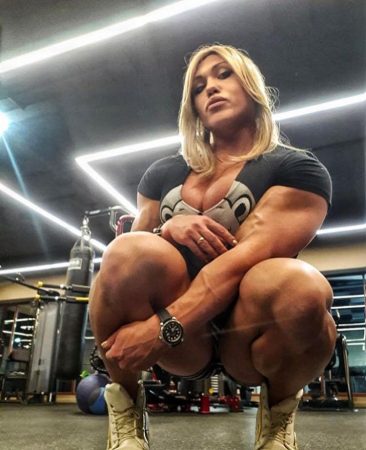
Female Fitness Starts & Ends With Abdominal CRUNCHES
Want strong and sexy abs? Try a traditional ab crunch, says a new study from the University of Wisconsin-La Crosse. Researchers asked eight men and women between the ages of 18 and 24 to test out a variety of ab exercises, including traditional crunches, bicycle crunches, planks, yoga poses and stability ball moves. They also…
